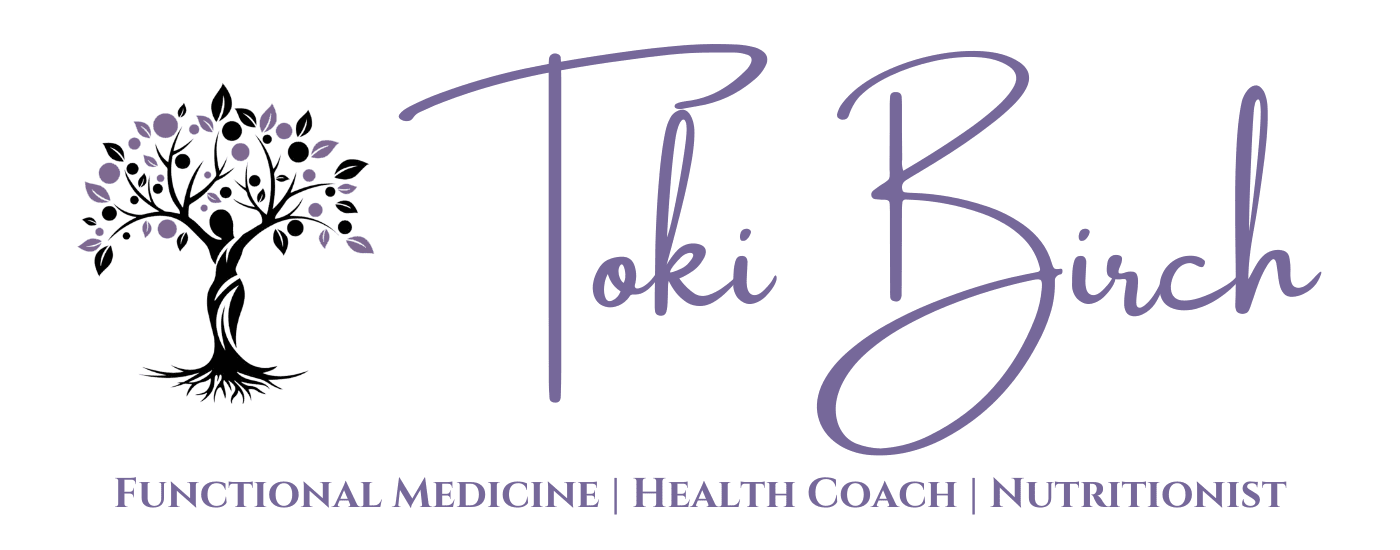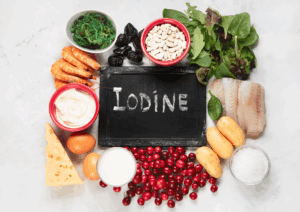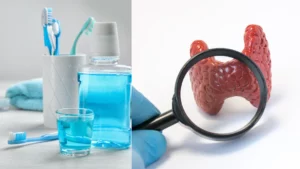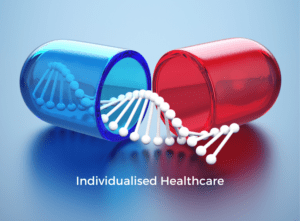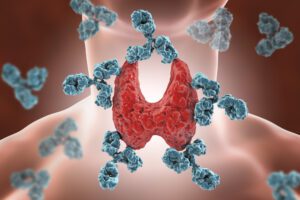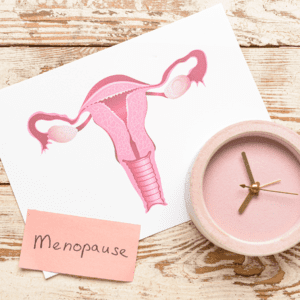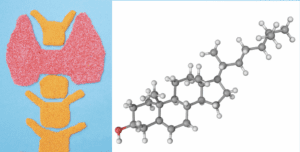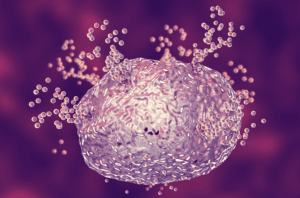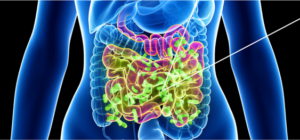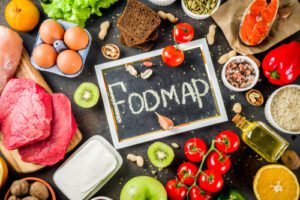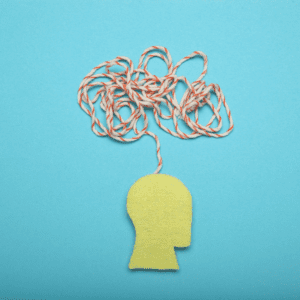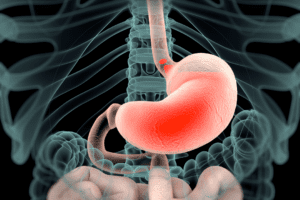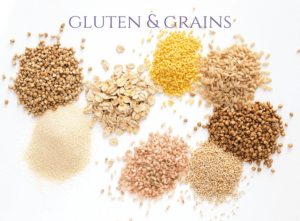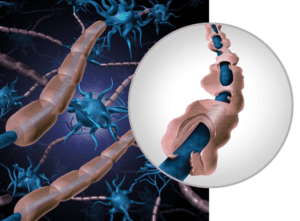THYROID HEALTH ARTICLES
Explore Thyroid-Friendly Tips, Tools, Recipes, and Real Talk for Fatigue, Brain Fog, & Hormone Balance.
From food and supplements, to testing and mindset - these articles are written to help women with underactive thyroid of Hashimoto's finally get the help they need to feel like themselves again.
![]()
This article has been medically reviewed by Dr. Charles Penick, MD 
For those suffering from digestive issues, mealtime can be nearly unbearable. The consequences of chronic indigestion can seriously interfere with the quality of life. Many diets and interventions are born out of a desire to help relieve people from their digestive issues, but not all are optimal for all people or long periods.
Today we highlight one recommended dietary solution for digestive issues: the FODMAP diet. We’ll explore whom it may help and how it may do more harm than good for others. We will also explore other tips to help relieve gastrointestinal distress.
What is the FODMAP Diet?
The FODMAP acronym stands for fermentable oligo-, di-, mono-saccharides, and polyols. These are highly fermentable, but poorly absorbed carbohydrates cause a digestive upset like cramps and bloating 1.
The carbohydrates that make up FODMAP foods typically contain non-digestible prebiotic fibers. These fibers draw water into your digestive tract, so consuming too many high-FODMAP foods can promote fermentation in the gut, which leads to bloating and gas2.
The FODMAP diet encourages removing these trigger foods in favor of low FODMAP foods to manage symptoms.
High-FODMAP carbohydrates include:1-3
- Fructose: A simple sugar found in many fruits and vegetables that also makes up table sugar and most added sugars. Found in large amounts in apples, apricots, cherries, figs, mangoes, nectarines, peaches, pears, plums and watermelon, honey, high-fructose corn syrup, and agave.
- Lactose: A carbohydrate found in dairy products. Found in large amounts in milk, ice cream, cream cheese, and yogurt.
- Fructans: A carbohydrate commonly found in grains like wheat, spelt, rye, and barley, and large amounts in onions, shallots, garlic, barley, cabbage, broccoli, pistachio, artichoke, and chicory root.
- Galactans: Found in large amounts in legumes, such as beans, lentils, and soybeans
- Polyols: Sugar alcohols and fruits that have pits or seeds, such as apples, avocados, cherries, figs, peaches, or plums, as well as sugar alcohols like xylitol, sorbitol, maltitol, and mannitol.
Who Might Benefit (and Not) from a Low-FODMAP Diet?
High-FODMAP foods are associated with various digestive upsets, including abdominal pain, bloating, distension, constipation, diarrhea, and flatulence. That being said, not everyone who suffers from these symptoms should pursue a low FODMAP diet, especially long-term.
FODMAPs are commonly prebiotic-rich foods, which are non-digestible parts of food that support good bacteria in the gut 4. Prebiotic-rich foods typically support digestive health by feeding good bacteria. However, in people with chronic and severe digestive disorders like Chrons and IBS, high-FODMAP foods have an opposite effect 5.
For those suffering from chronic digestive issues like Chrons and IBS, the symptoms can be truly debilitating. Therefore, removing FODMAPS is a solution to improve symptoms while addressing such illnesses’ bio-individual and complex nature. One study highlights that 3 out of 4 people with IBS felt immediate relief while avoiding high-FODMAP foods 6.
Completely removing all high-FODMAP could harm the gut in the long run by starving it from these beneficial prebiotic foods. Medical experts highlight that this diet should be short-term and used more like a discovery process to identify trigger foods and allow the body to heal 2. For those who are suffering from IBS, this trade-off may be necessary and worth considering. For others, it may do more harm than good by starving the good bacteria of gut-nourishing prebiotic food and nutrients.
Other Solutions to Support FODMAP-Related Digestive Issues
As we have explored, there are many benefits to consuming foods that contain FODMAPs. Therefore removing them entirely from your diet, especially in the long run, can do more harm than good. Thankfully, there are other solutions to digestive relief that don’t require the total elimination of FODMAP foods.
1. Use A Digestive Supplement
One solution is using a supplement like FODMATE™ to help your body break down the potentially troublesome FODMAP foods.
FODMATE™ is an innovative enzyme formula designed for short-term use that can help support digestive health, including relief from occasional cramping, bloating, gas, abdominal pain, diarrhea, and constipation resulting from high consumption FODMAP foods.
Elimination diets like the low-FODMAP diet are not ideal for everyone. For those who benefit from them, FODMATE™ can support the times when consuming such foods is unavoidable (holidays, birthdays, or out to dinner). Those who don’t suffer from debilitating digestive issues but still get bloated or gassy from high-FODMAP foods can use FODMATE™ to quell their symptoms.
You can also add this digestive enzyme formula to an elimination diet to enhance its benefits or simply use it with high FODMAP foods to ease the symptoms they cause (while still benefitting from the nutritional benefits of these foods).
2. Try Gentle Exercise
Although exercise may feel like the last thing you want to do while dealing with digestive distress, studies suggest that it may help. Gentle exercise like yin yoga, walking, or stretching can help relieve gas 7. Certain yoga poses are specially designed to help put gentle pressure and then release it from the abdomen area, which can help you relax and get things moving 8.
The key is to promote relaxation through movement but avoid anything that will elevate heart rate and put your body in a stress-dominant state.
3. Apply Heat
Applying direct heat to the lower abdomen can help relax the stomach and relieve symptoms like cramps and pain associated with digestive distress. This can be done using a hot water bottle or a heating pad. Hot showers and baths can also work.
4. Just Rest
Although We are constantly trying to fix our unpleasant situations by doing more, sometimes the opposite is needed. When it feels like you’ve tried everything, maybe a day (or couple hours) off to just rest is the best option. Take a break from what you’re doing, and rest completely to help your body focus on digestion.
When the sympathetic nervous system is activated, and the body is in a dominant fight-or-flight mode, it does not digest properly. Proper digestion requires a parasympathetic-dominant state, meaning that it has to feel relaxed 9. Although this is true for everyone, it is especially noticeable for those who suffer from more serious digestive problems.
Summary
The low-FODMAP diet was invented as a short-term elimination diet to help people who suffer from digestive distress to help pinpoint their trigger foods. It has been proven to provide immense relief to about 75% of people who suffer from chronic digestive issues like IBS. Although it offers comfort from digestive problems, high-FODMAP foods are typically prebiotic-rich foods that support gut health in the long run. Therefore eliminating FODMAP-rich foods is not an optimal solution to digestive issues in the long term. Other ways to support healthy digestion include using a digestive supplement, gentle exercise, applying heat to the belly, and good old-fashioned rest.
Medical Disclaimer: This article is based upon the opinions of Revelation Health. The information on this website is not intended to replace a one-on-one relationship with a qualified health care professional and is not intended as medical advice. It is intended as a sharing of knowledge and information from the research and experience of Revelation Health and associates. This article has been medically reviewed by Dr. Charles Penick, MD for accuracy of the information provided, but Revelation Health encourages you to make your own health care decisions based upon your research and in partnership with a qualified health care professional.
References
1 Gibson, P R, and S J Shepherd. “Personal view: food for thought--western lifestyle and susceptibility to Crohn's disease. The FODMAP hypothesis.” Alimentary pharmacology & therapeutics vol. 21,12 (2005): 1399-409. doi:10.1111/j.1365-2036.2005.02506.x
2 Veloso, Hazel Galon. “FODMAP Diet: What You Need to Know.” Johns Hopkins Medicine, www.hopkinsmedicine.org/health/wellness-and-prevention/fodmap-diet-what-you-need-to-know.
3 “Monash FODMAP Shop.” FODMAP Resources for Health Professionals | Monash FODMAP - Monash Fodmap, www.monashfodmap.com/shop/.
4 Meyer, D, and M Stasse-Wolthuis. “The bifidogenic effect of inulin and oligofructose and its consequences for gut health.” European journal of clinical nutrition vol. 63,11 (2009): 1277-89. doi:10.1038/ejcn.2009.64
5 Marsh, Abigail et al. “Does a diet low in FODMAPs reduce symptoms associated with functional gastrointestinal disorders? A comprehensive systematic review and meta-analysis.” European journal of nutrition vol. 55,3 (2016): 897-906. doi:10.1007/s00394-015-0922-1
6 Saha, Lekha. “Irritable bowel syndrome: pathogenesis, diagnosis, treatment, and evidence-based medicine.” World journal of gastroenterology vol. 20,22 (2014): 6759-73. doi:10.3748/wjg.v20.i22.6759
7 “Gas (Flatulence) Guide: Causes, Symptoms and Treatment Options.” Drugs.com, www.drugs.com/health-guide/gas-flatulence.html.
8 Stephanie Clairmont. “Stretch and Digest: Yoga for IBS.” Stephanie Clairmont, 18 Apr. 2019, stephanieclairmont.com/stretch-digest-yoga-ibs/.
9 Richter, Michael, and Rex A. Wright. “Autonomic Nervous System (ANS).” Encyclopedia of Behavioral Medicine, 2020, pp. 188–191., doi:10.1007/978-3-030-39903-0_790.
share this POST
Articles
Is Iodine Safe for Women with Underactive Thyroid or Hashimoto’s?
By Toki Birch | | Autoimmunity, Functional Medicine, Gut Health, Hypothyroid, Inflammation, Thyroid, Thyroid hormones, Thyroid Support
Does Thyroid Medication Cause Bone Loss? What the Research Says
By Toki Birch | | Bone Health & Longevity, Functional Medicine, Hypothyroid, Thyroid, Thyroid hormones, Women's Wellness
Fluoride and Thyroid Health: How It Affects Your Energy & Hormones
By Toki Birch | | Hypothyroid, Natural Remedies, Thyroid, Thyroid hormones
4 Foods to Include in Your Diet If You Have an Underactive Thyroid
By Toki Birch | | Functional Medicine, Hypothyroid, Inflammation, Thyroid, Thyroid hormones, Uncategorized
Autoimmune Diseases in Women: Understanding the Risks and Importance of Lifestyle, Diet, and Gut Health
By Toki Birch | | Autoimmunity, Gut Health, Natural Remedies, Thyroid Support, Women's Wellness
What Is Functional Medicine?
By Toki Birch | | Functional Medicine, General
Learning to Live with Hashimoto’s Thyroiditis
By Toki Birch | | Autoimmunity, Hypothyroid, Inflammation, mold toxins, Mood disorders, mould toxins, Thyroid, Thyroid hormones
Functional Medicine and Menopause
By Toki Birch | | Menopause
Happy YOU Year! Leap into the New Year with real resolutions – and make them stick!
By Toki Birch | | Detox, Detoxify, General
Three Reasons to Go Easy on Gluten
By Toki Birch | | Autoimmunity, Gut Health, Inflammation
Thyroid Stimulating Hormone (TSH) and Cholesterol
By Toki Birch | | Cholesterol, Thyroid, Thyroid hormones
Are You Suffering from Histamine Intolerance?
By Toki Birch | | Gut Health, HIstamine, Histamine Intolerance, Inflammation
Top 10 Thyroid Symptoms That You Shouldn’t Ignore
By Toki Birch | | Hypothyroid, Thyroid, Thyroid hormones
8 Intermittent Fasting Benefits
By Toki Birch | | Autoimmunity, Detox, Inflammation
Periodontal Disease and C-Reactive Protein (CRP)
By Toki Birch | | Heart Disease, Inflammation, Oral health
Restless Leg Syndrome and IBS
By Toki Birch | | Gut Health, Mood disorders, Stress Management
Symptoms of SIBO: You May Be Surprised
By Toki Birch | | Detox, Gut Health, Mood disorders, Stress Management
Probiotics and Gut Health: Is Your Probiotic Harming Your Gut?
By Toki Birch | | Gut Health, Uncategorized
Top Sleep and Anxiety Strategies
By Toki Birch | | General, Mood disorders, Stress Management, Uncategorized
Does the FODMAP Diet Help or Harm?
By Toki Birch | | Gut Health, Inflammation
Understanding SIBO
By Toki Birch | | Gut Health, Inflammation
Mycotoxins (Mold) and Anxiety
By Toki Birch | | Autoimmunity, Detox, Gut Health, mold toxins, Mood disorders, mould toxins, Stress Management, Uncategorized
Anxiety and Depression – Brain On Fire?
By Toki Birch | | Mood disorders, Stress Management
Could Your Thyroid Be Why You Are Not Feeling Well?
By Toki Birch | | Autoimmunity, Detox, mold toxins, mould toxins
The #1 Thing Not to Take For Acid Reflux
By Toki Birch | | Autoimmunity, Gut Health
Emotional Wellness: 6 Techniques to Detox from Emotional Toxicity
By Toki Birch | | Stress Management
Feeling Stressed, Anxious or Fatigued? Maybe It’s Poor Gut Health
By Toki Birch | | Autoimmunity, Gut Health
How To Treat Acid Reflux (GERD)
By Toki Birch | | Autoimmunity, Gut Health
Why Your Probiotic May Be Causing You More Harm Than Good
By Toki Birch | | Autoimmunity, Gut Health, Inflammation
Why Optimal Gut Health Is Key To Losing Weight For Women
By Toki Birch | | Autoimmunity, Gut Health
How to Naturally Remedy Anxiety by Balancing the Gut
By Toki Birch | | Autoimmunity, Gut Health
The Magic of Frequency Specific Microcurrent
By Toki Birch | | Frequency Specific Microcurrent
What Does Gluten Free Really Mean?
By Toki Birch | | Autoimmunity, Gut Health
Multiple Sclerosis in Women.
By Toki Birch | | Autoimmunity
Frequency Specific Microcurrent
By Toki Birch | | Autoimmunity, Frequency Specific Microcurrent, Gut Health, Stress Management
Top 10 Strategies for Restoring Your Gut Health
By Toki Birch | | Gut Health
Discovering Your Self-Worth Despite Challenging Circumstances.
By Toki Birch | | Stress Management
Mental Health, Inflammation and Mood Foods
By Toki Birch | | Stress Management
Can Fermented Foods Make You More Sociable?
By Toki Birch | | Gut Health, Stress Management
EVERYTHING YOU NEED TO KNOW ABOUT IRRITABLE BOWEL SYNDROME
By Toki Birch | | Gut Health, Stress Management
YOUR GUT-BRAIN AXIS: HOW TO DESTRESS NATURALLY
By Toki Birch | | Gut Health, Stress Management
THE ROLE OF LEAKY GUT IN AUTOIMMUNE DISEASE, ALLERGIES, AND STRESS – PART 1
By Toki Birch | | Autoimmunity, Gut Health
The Top Foods You Should Be Eating for Total Body Health
By Toki Birch | | Gut Health, Stress Management
THE ROLE OF LEAKY GUT IN AUTOIMMUNE DISEASE, ALLERGIES AND STRESS – PART 2
By Toki Birch | | Autoimmunity, Gut Health
Take the Free Thyroid Quiz
Still tired all the time? In less than 2 minutes, pinpoint whether your thyroid needs help.
Toki Birch is a certified functional medicine practitioner helping women over 40 reverse underactive thyroid and bring about remission from Hashimoto’s naturally.
FOR SUPPORT ISSUES OR QUESTIONS, PLEASE EMAIL US AT SUPPORT@TOKIBIRCH.COM
